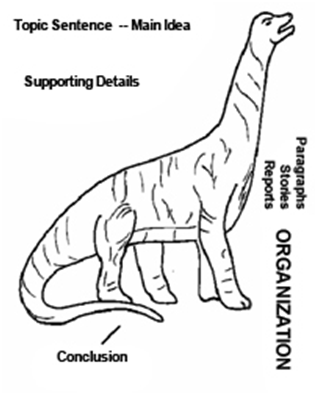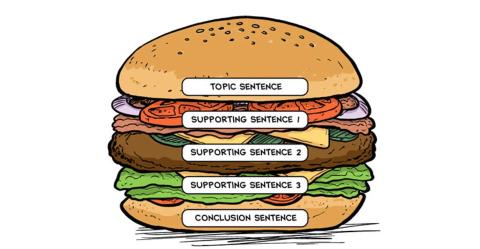Writing is definitely the worst task of all. It’s just way too hard to remember all the things I need, like periods and capital letters. Then, it’s almost impossible to think about how to spell words when I’m busy trying to think about the story. It’s so hard to remember what I’m writing about ….
I figure it’s easier to write just a few sentences. That doesn’t hurt my hand so much either. My teachers complain, but I just keep writing very short stories. After all, teachers don’t understand what it’s like to struggle and struggle to write and still have the paper turn out sloppy and full of mistakes. They always tell me how messy my papers are. They just can’t understand how hard I try. No matter how carefully I work, the words don’t look the way they look for the other kids. Sometimes I know how I want the word to look, but it just doesn’t turn out that way.”
Eli’s ongoing lament about the writing process highlights many of the key struggles of students: writing is so very hard, the process contains multiple components, and no one understands the struggles. The questions we, as parents and teachers, face as we try to assist students who struggle with writing, include:
- How can I help the student chunk the task into smaller, more manageable units?
- How can I help the student recall all the necessary components for the writing task?
- How can I provide authentic positive comments which reinforce what the child does appropriately, no matter how small the component?
Chunking the task into smaller, more manageable units
When presented with a writing task in school, Eli’s friend reminds him he has strengths to use to help him get through the assignment. “Sam leans over and to my surprise whispers, ‘Eli, I know you hate writing, but remember you have strengths too.’ Then I smile, take a deep breath, and think about my strategies. If I just take one step at a time, maybe I can manage this.”
The plan here is to have a strategies list, and use this list to identify each step in the process of writing the assignment. One valuable strategy is to use the key word “POWER,” in which each letter stands for one step in the process.
P — prepare, list all your ideas
O — organize, assemble the ideas
W — write the draft
E — edit, looking for and correcting any errors
R — revise, write the final draft
In step 1, the “P” step, the students prepares all the ideas. It’s similar to a brainstorming process. A visual or graphic organizer is useful at this stage, especially since it may also be used in the next step. Visual organization strategies are effective because they provide a concrete alternative to traditional outlining. Organizers allow students to organize material in a visual pattern and enable them to see the relationships among the information. This facilitate students’ ability to represent connections more easily while promoting fluency, flexibility, and more originality.
In a simple graphic organizer, the student may have one larger circle for the main idea and three (or more) circles for supporting facts. Having this framework helps students focus on the main components of the writing assignment, highlighting one portion at a time. Many types of graphic organizers are available, and it is highly efficient to begin teaching these to students as soon as they begin the writing process.
In step 2, the “O” stage, students must organize the information, including sequencing the ideas and the flow. Many students who struggle with this aspect of writing find that having a graphic reminder of the components eases the way for them. It helps them visualize the entire process or concept, which is essential to knowing where an idea comes from and where it’s going. Two common graphics to help students remember the flow necessary for writing a paragraph or story are the dinosaur and a hamburger.

The dinosaur graphic represents the three main components of a paragraph, or story. The head represents the introduction, just as the head of the dinosaur leads him where he is going. The long neck represents the supporting details, as the dinosaur’s neck supports his head. The tail represents the conclusion, or the ending.
The hamburger also represents the three main components of a paragraph, or story. There is the top bun, or the introduction. There is filling, representing the internal or supporting information. The bottom bun represents the conclusion.

To help the student sequence the information within a passage, he uses his graphic organizer and decides what goes first, second, etc. It is important to stress to the student that effective writing is absolutely dependent on good organization skills. Generally, students who struggle to sort and organize language-based information will also struggle with clarity, conciseness, and effectiveness of written assignments. It is imperative that such students understand how to structure different tasks for different purposes. Concrete visual techniques are extremely helpful and include a wide range of strategies such as pre-writing worksheets, frames, visual organizers, mind maps, and clusters.
Recalling the necessary components for a writing task
This represents another major struggle for many students. As expressed by Eli, “Am I stupid? Does my brain just stop working sometimes? I think I know the words, but then when they’re all together on a page, they get jumbled. Mom keeps telling me I’m not stupid, but she’s just Mom. It’s so frustrating. I feel I can’t rely on or trust my brain”.1
One of the most successful strategies for struggling students is to use a visual organizer in the form of a frame. A frame presents the various components which are necessary and serves as a reminder to recall each step and to do the steps, one at a time.
In a Frame Organizer, the student first draws a picture for the beginning, the ending and then the middle of the story. After that, he writes about his beginning, middle, and end. In a Main Idea and Details Organizer, the student writes the main ideas in the big boxes on the left and then supports each with details.
Providing authentic positive comments to reinforce what the child does appropriately
There are so many components to the writing process that students who struggle easily become overloaded. Therefore, it is very important to highlight what the child has done appropriately, regardless of how small the component, or how many other parts remain inefficient.
Mel Levine refers to the processes of demystification, a vital aspect of which is to identify and reinforce the strengths and beauty in each child and adolescent. In Eli’s story, being able to understand himself and his learning style is probably the key factor involved with his overall success, in spite of many learning challenges, all of which are lifelong issues. It is critical that we help such students learn to cope with their life as well as the daily activities in school.
Some examples of authentic positive comments about a small component are:
- You have a great description of the beach in your story. I like the way you described the sounds and the wind.
- You sequenced your ideas really well—the order is logical and easy to follow.
After your positive comments, then select one or two areas that need improvement and list those. There is no need to highlight every thing that the child did wrong in his writing assignment. After all, he will be unable to fix everything at once. In contrast, if you provide only a few areas for improvement, then the child can work on those before moving on to others.
Conclusion
It is valuable to recall the words by Gordon Sherman, former president of the International Dyslexia Association, and assistant professor of neurology at Harvard Medical School , who states that we all have different brains. Each person’s brain is different and processes information differently. This variation is called cerebrodiversity, and is the cause of learning differences. It may result in some students having difficulties in the classroom, because there is no such thing as an ideal, optimal brain. Understanding that each individual actually processes information differently is the key to understanding basic learning differences. Sherman stresses that learning differences are not disabilities. It is one’s learning environment that makes learning differences problematic.
Eli concludes in the Epilogue to his story,
I know my thinking is different from other people. So many times, having a different thinking pattern gets me in trouble and it definitely causes me to have to work harder. Other times, being different is like having a gift. Working with machines is one of my many wonderful gifts ….
It is my hope that teachers, parents and other students will realize that everyone has his or her own set of strengths and weaknesses. It is indeed true that we have all kinds of minds and all kinds of talents”.
Richards, R. (2008). A Student’s Perspective on Writing. Exclusive to LD OnLine.
